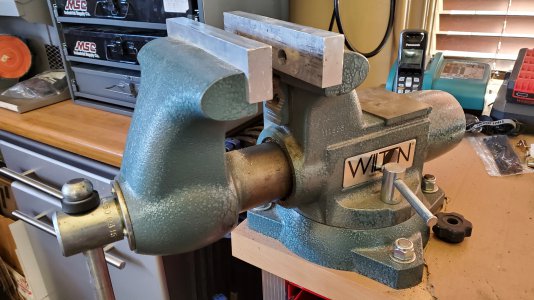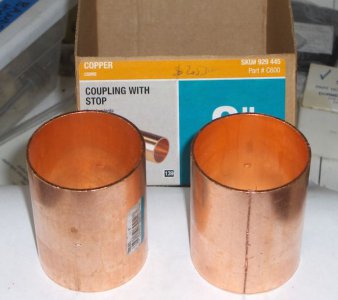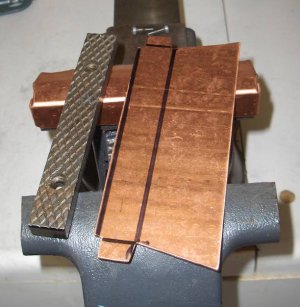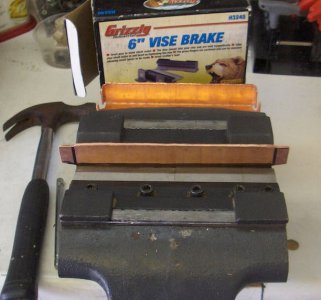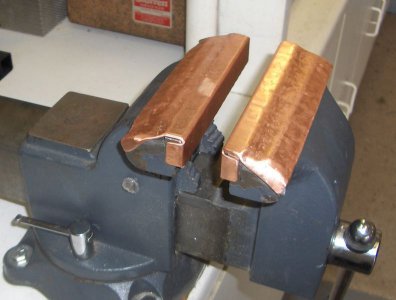I must be missing something here. I don't think that there is anything soft about replacing one type of metal jaw with another type of metal jaw. They are both hard. Or is this just an oxymoron when referring to one metal as soft. I cut and bent a plastic lid from a can of planters peanuts or use one of my shop rags if I want to protect something. These are truly soft.
You are absolutely right in that plastics are very much softer, and I have resorted to them, but the advantage of deformable ductile metals like copper and Al is that they can get up to a pressure still short of marking a part, but useful in the friction, grip and stability they provide.
I once (briefly) used a couple of small off-cuts of 2mm PTFE, because I was going to heat up the part for a soldering operation. Copper or Aluminium made for too much of a heat sink. It was a mistake! Way too slippy! In the end, I settled for bits of cardboard notebook cover. It worked, even though they ended up a tad smoky charred!
Right now, for one vise, I have two bits of aluminium 30mm x 30mm x 3mm thick angle extrusion + 2 x fat rubber bands, and for the other vise - these plastic jaws..
-->
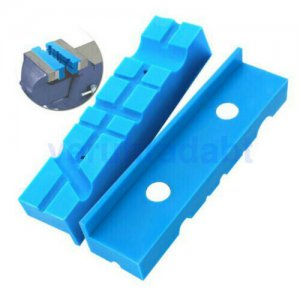
These are the type with the built-in magnets - so no rubber bands needed. They are hard plastic, but could never mark a metal. They slip like crazy on smooth metal, e.g. a stainless bolt. They deform and threaten to break if you get up enough grip. They were completely non-viable to hold a bolt while I added a few mm of additional thread with a M8 die. That takes real grip! The aluminium angle could get clamped direct onto the threads without hurting them. It leaves the pressed-in imprint of part of the threads circumference - a self-shaping exact fitting 2-sided almost-chuck that just keeps increasing it's clamp area until things stop slipping.
Sure, there are times when plastic is very appropriate, but one needs quick change options. That is why I go for the easy clip on method instead of machined jaws bolted on. The guys who praise copper jaws only do so, because they tried it, and very much liked it.



